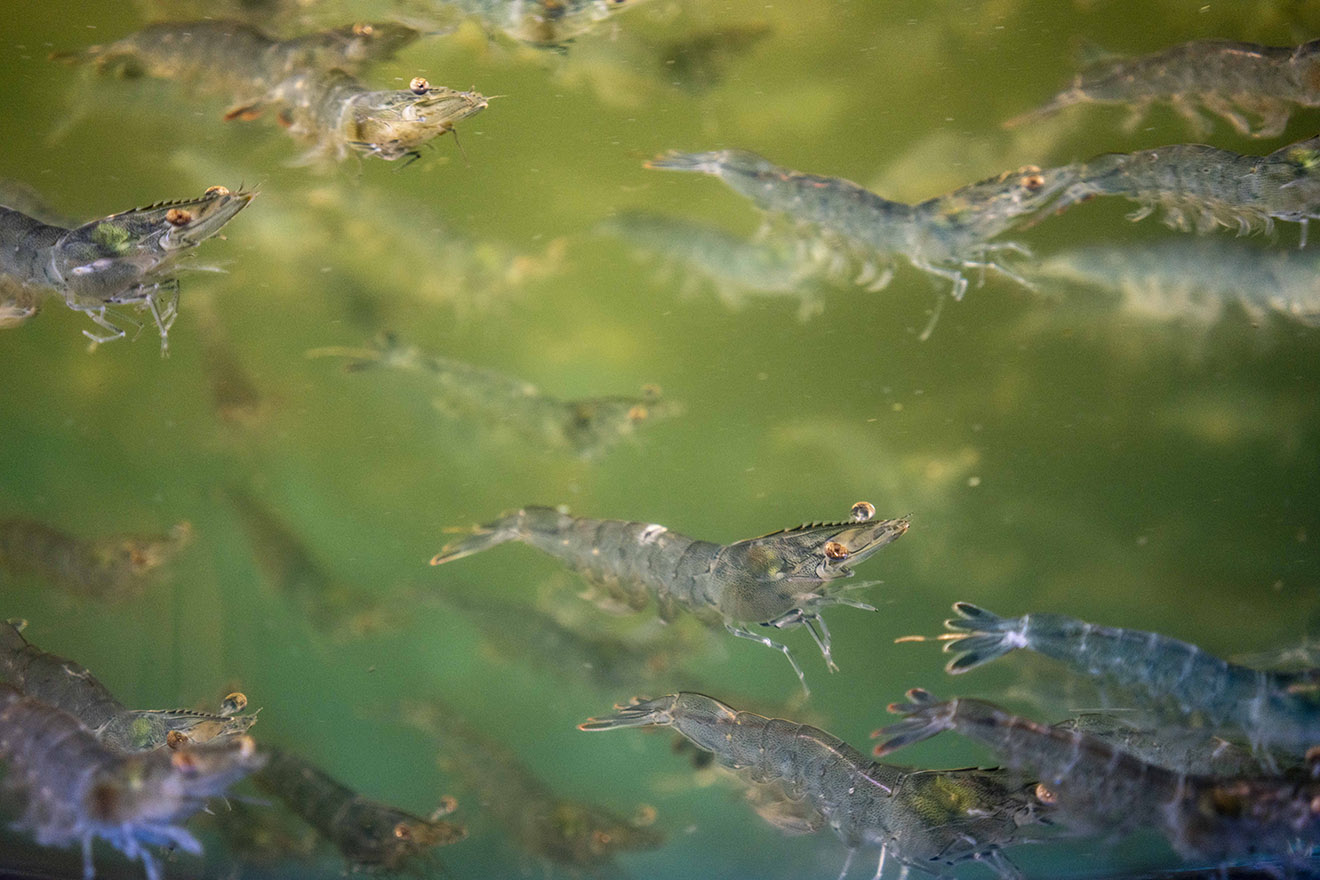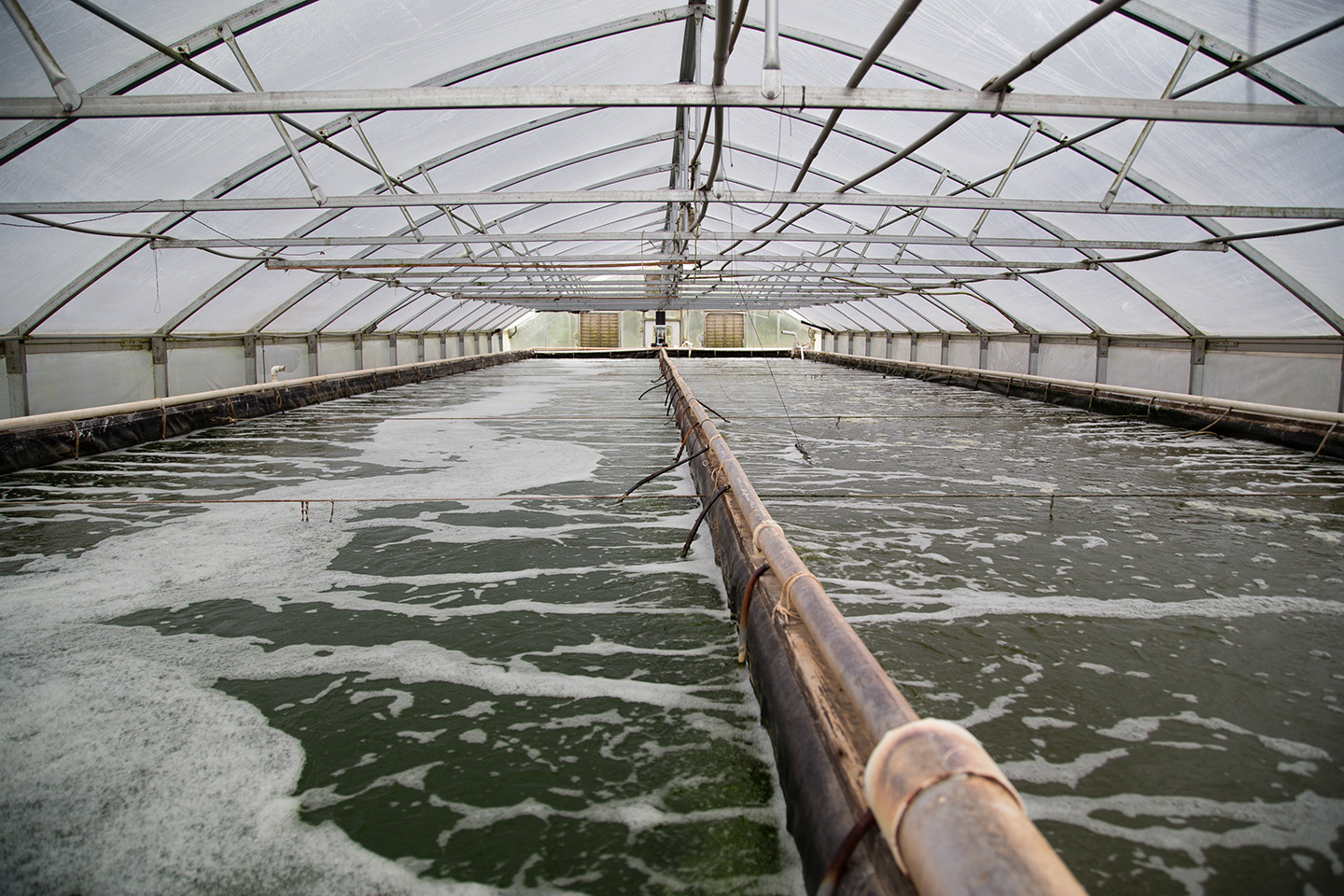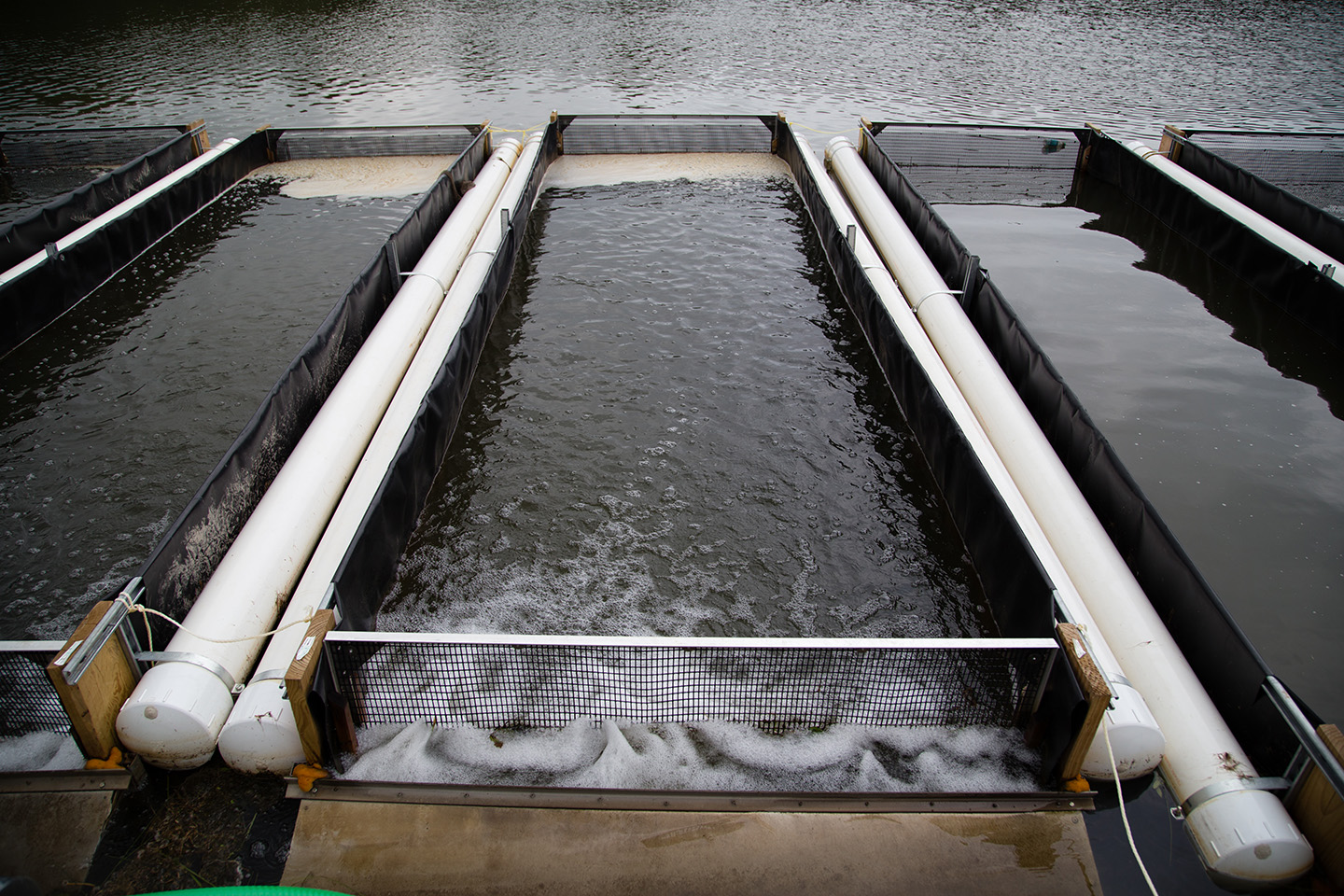
(Photo: Joseph Hopper/Iowa Soybean Association)
Soy aquaculture on the verge of domestic success
October 28, 2022
You could argue that it’s the newest version of surf ’n’ turf and one of the chefs involved is the American soybean farmer.
With new advances in research and a growing demand for sustainable domestic fish and shrimp, the Soy Aquaculture Alliance (SAA) is determined to get more soy in the diets of seafood and freshwater fish.
“The United States is lagging behind in aquaculture growth,” says SAA Executive Director Easton Kuboushek. “With soy as a primary protein source, our mission at SAA is to figure out how to grow domestic aquaculture.”
More than 85% of American seafood is imported, according to the National Oceanic and Atmospheric Administration (NOAA), creating a trade deficit of nearly $17 billion.
“This gap in trade is a tremendous opportunity for soybean farmers to increase demand by growing the market for fresh, local and sustainable fish and shrimp,” Kuboushek says.

Opportunities abound
Finding and creating domestic aquaculture markets is multi-pronged, Kuboushek says.
“Creating those markets has already been demonstrated internationally; we’re trying to build that importance domestically,” he says. “To start, we’re investing checkoff dollars into economic, technology and genetic research for each species.”
For example, SAA is currently running selective breeding trials involving rainbow trout, which is primarily carnivorous, to identify trout with a higher tolerance for plant-based protein like soybean meal.
“With poultry, pork or beef, there are a relatively low number of species,” Kuboushek says. “There are hundreds of species of fish and shrimp, each of which has a different nutritional requirement for each stage of their life cycle.”
“For aquaculture to take off, we have to find the unique solution for soy in their diets.”
But diet alone is just part of the soy-fish connection. There are also policies and regulations, as well as finding profitability.
“Like soybean farmers, input costs – especially feed – are the No. 1 factor of aquaculture farmer profitability,” Kuboushek says. “Soy is in consistent supply and an economical source of protein. The more we can help aquaculture farmers be successful using our product, the greater potential for mutual growth.”
SAA supports research by working with universities and graduate-level students as they help farmers and the soy industry reach its potential. One such endeavor looked at feed formulations.
 “This past summer, we hosted a two-day virtual workshop for 24 future nutritionists in aquaculture to find feed formulations for every species and every life stage,” Kuboushek says.
“This past summer, we hosted a two-day virtual workshop for 24 future nutritionists in aquaculture to find feed formulations for every species and every life stage,” Kuboushek says.
“Education and outreach, informing the market, building relationships, having key suppliers and key stakeholders, it’s all critical,” Kuboushek says.
SAA has established a small group of practicing industry experts to share their perspectives and discuss economic and political obstacles that stand in the way of allowing soybean farmers to be actively engaged in the process.
“There is so much opportunity in aquaculture,” Kuboushek says, adding that seafood consumption has passed beef consumption and has upward potential for demand growth.
“Seafood is a player in sustainability and reduction of carbon emissions. If we’re not preparing now, we’ll miss out down the road,” he says.
Insect meal, the current greatest source of protein for seafood, is proving cost prohibitive. Soybean meal offers a carbon-neutral solution and is much less expensive.
“It’s much better to be a player now than to try and catch up later,” Kuboushek says.
Since wild-caught fish is not sustainable, and aquaculture can be sourced sustainably with a much lower carbon footprint, domestic aquaculture will be part of that process.
Consumer demand
American grocers report hearing from customers that they want domestically grown, sustainably raised fish and shrimp.
“U.S. soy is a great solution to consumer demand for sustainable ingredients,” Kuboushek says. “SAA is working with certifying bodies and regulatory organizations to educate them about the benefits of U.S. soy.
“Right now, because of the barriers we have, the U.S. is behind as we are importing most of our seafood,” Kuboushek says.
Regulatory barriers over food security and sustainability, once lifted, could push soybeans into the forefront of aquaculture.
“We’re positioned for growth,” he says. “Research and educating these regulatory organizations and finding solutions to help farmers be profitable is key.”
Five years from now, SAA hopes the regulatory environment will be much simpler for licensing aquaculture opportunities offshore and onshore.
“It’s too complex of a regulatory environment for an aquaculture farmer to get started,” Kuboushek says. “And the barrier to entry is profitability and trying to find a model that can compete with $7 per pound of shrimp.”
Once a friendlier regulatory and economic environment is created, and a stronger co-op supply chain is established, soybean farmers can make a profit. And when they can prove consistent results for grocers and consumers, Kuboushek says this latest version of surf ’n’ turf will be ready to serve.
Back